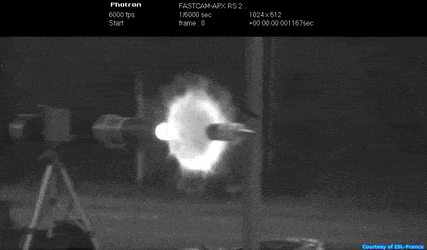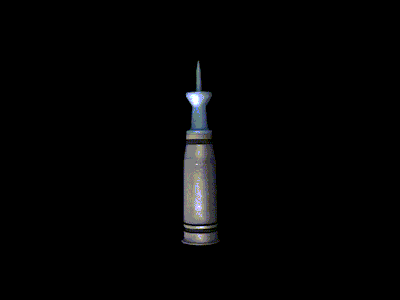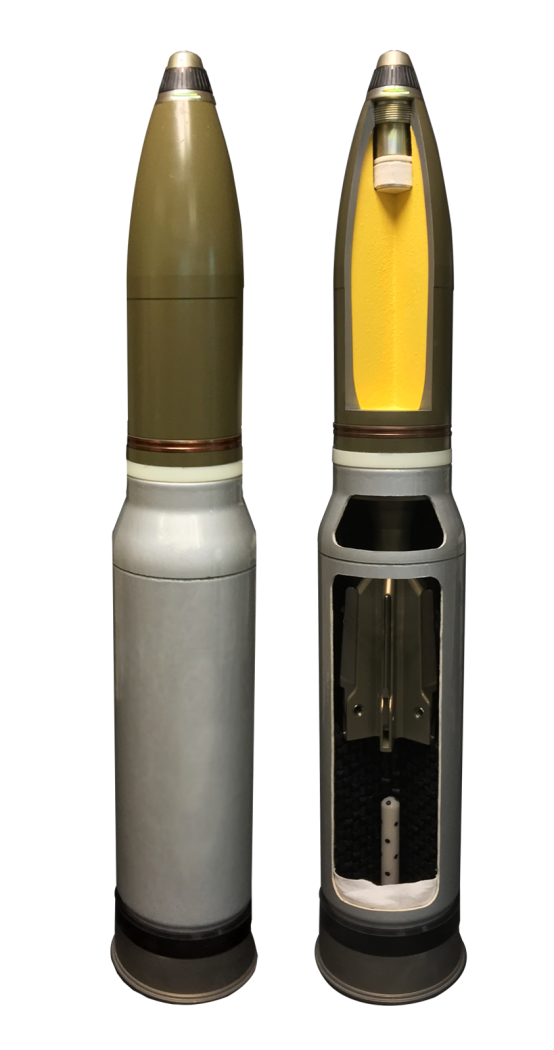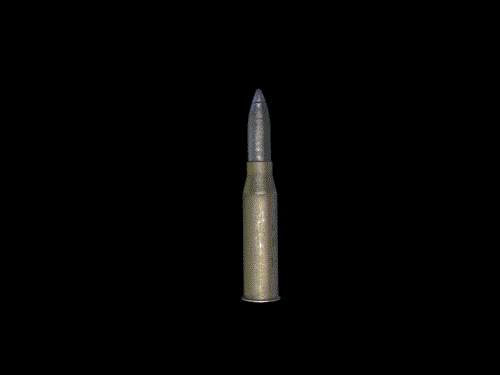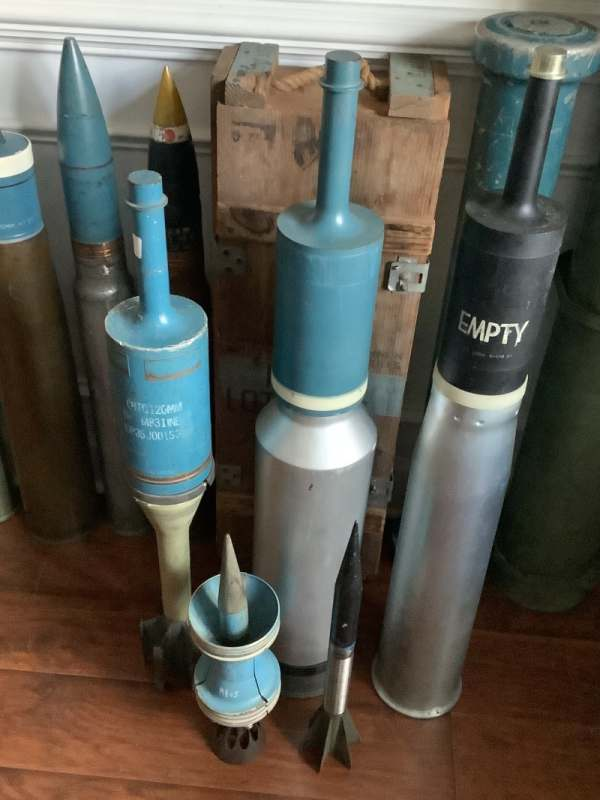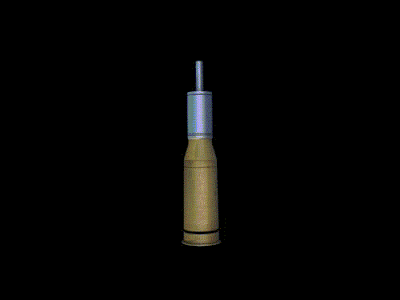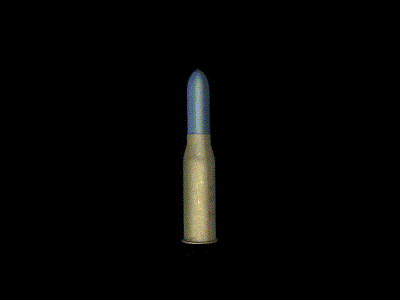arma_3:ifv_tank_ammunition
Table of Contents
IFV and Tank Ammunition
This article is a part of Arma 3 Asset Guides.
| Target Types | |
|---|---|
| Heavy Armor | Heavily armed and armored vehicles with a mix of passive and active protection measures e.g. composite/reactive and slat/cage armor, trophy systems, ERA blocks, etc. Ex. M1A1, T-72. |
| Medium Armor | Assets that strike a balance between protection, mobility, and firepower. Sometimes includes modern active and passive protection measures listed above. Ex. BMP-4, M60A2, Bradley. |
| Light Armor | Fast and agile, these vehicles still maintain basic protection against small arms fire and shrapnel. Ex. HMMWV, BRDM-2, and Tigr. |
| Structures | Buildings, bunkers, etc. |
Rounds with '-T' and '-FS' suffixed indicates tracer or fin-stabilized, respectively.
APFSDS
| Armor-Piercing Fin-Stabilized Discarding Sabot | |
|---|---|
| Use | Effective against armored targets. The kinetic energy penetrator uses a narrow, long sabot which is discarded after firing, allowing for high muzzle velocity and armor penetration capabilities. Weak against unarmored vehicles due to over-penetration unless fired at crew, frame or engine block. |
| Strength | Light, Medium, Heavy Armor |
| Weakness | Unarmored vehicles, Infantry |
SABOT
ATGM
| Anti-Tank Guided Missile | |
|---|---|
| Use | ATGMs are designed to defeat heavy armor. Using guidance tech such as MCLOS/SACLOS, laser and/or IR guidance, these missiles can track and strike armor from long distance. ATGMs often use shaped charge warheads similar to HEAT rounds, enabling them to defeat 600m+ of RHA. |
| Strength | Light, Medium, Heavy Armor |
| Weakness | Fast-moving, small targets |
Some ATGM rounds are designated as bunker busters, and destroy structures. I.e. BGM-71E for the TOW.
MPAT
| Multi-Purpose Anti-Tank | |
|---|---|
| Use | MPAT is a versatile tank ammunition used for anti-armor and anti-personnel purposes. It features a multi-mode fuse that enables impact detonation, delay, and airburst modes. Against armored targets, it acts as an armor-piercing round to defeat enemy tanks. In airburst mode, it defeats soft targets by dispersing frag over a wide area, making it effective against infantry and other unarmored threats. |
| Strength | Light, Medium Armor, Infantry |
| Weakness | Heavy Armor |
HE
| High-Explosive | |
|---|---|
| Use | High-Explosive rounds are designed to maximize damage through a large blast radius, making them effective against a variety of targets, including enemy personnel, structures, and lightly armored or unarmored vehicles. Upon impact, these rounds detonate and unleash a powerful explosion, causing significant blast damage and producing lethal fragments or shrapnel. While they aren't designed to penetrate heavy armor, their blast effect can still incapacitate or damage armored vehicles by targeting weak points such as vision ports or tracks. |
| Strength | Structures, L Armor, Unarmored vehicles, Inf. |
| Weakness | M, H Armor |
HEAT
| High-Explosive Anti-Tank | |
|---|---|
| Use | A type of shell that uses a shaped charge to penetrate armor. It does not rely on kinetic energy to defeat armor, unlike APFSDS rounds, and is therefore effective at any range. |
| Strength | Light, (Some) Medium Armor |
| Weakness | Medium, Heavy armor equipped w/ modern countermeasures |
HEDP
| High Explosive Dual Purpose | |
|---|---|
| Use | Designed for use against a wide variety of target types, including both armored vehicles and structures or fortifications. The round combines the capabilities of a high-explosive round with a shaped charge, allowing it to defeat armor while also causing significant blast damage. The shaped charge enables penetration of armored targets, while the high-explosive component creates a blast effect that is effective against light structures, personnel, and other non-armored targets |
| Strength | Structures, Light, (Some) Medium Armor, Infantry |
| Weakness | Medium, Heavy armor equipped w/ modern countermeasures |
HESH
| High-Explosive Squash Head | |
|---|---|
| Use | When a HESH round hits a target, the plastic explosive within the round spreads out or “squashes” against the surface before detonating. This creates a shock wave that travels through the armor, causing spalling on the inside surface. The resulting high-velocity fragments can incapacitate or kill the crew and damage internal equipment. HESH rounds are particularly effective against older tanks and armored vehicles without modern composite or reactive armor. |
| Strength | Older tanks, armored vehicles without modern composite or reactive armor, structures. |
| Weakness | Modern composite armor, reactive armor, and heavily armored vehicles. |
Canister
| Also known as Case Shot or Grape Shot | |
|---|---|
| Use | Designed primarily for anti-personnel and anti-materiel use in close combat situations. The canister round is essentially a large shotgun shell, filled with numerous small, round projectiles resembling ball bearings. |
| Strength | Unarmored Vehicles, Infantry |
| Weakness | Armor |
GPR
| General Purpose Round | |
|---|---|
| Use | A versatile round that is designed to be effective against a variety of targets, including both armored vehicles and soft targets. It includes a tracer element to allow the gunner to track the trajectory of the round and adjust their aim as necessary. The specific effects of a GPR-T can vary widely based on the specific design and use. |
| Strength | Structures, Light, Medium Armor, Unarmored vehicles, Infantry, varying depending on design |
| Weakness | Heavy Armor, unless specifically designed to penetrate such armor. |
APBC
| Armor-Piercing Ballistic Capped | |
|---|---|
| Use | APBC-T rounds have a ballistic cap, improving its aerodynamic properties, and thus increasing velocity and range. The round also has a hardened core that can pierce through armor. The tracer element is included to allow gunners to observe the trajectory of the round and adjust their aim accordingly. |
| Strength | Light, Medium Armor |
| Weakness | Heavy armor equipped w/ modern countermeasures |
APCR
| Armor-Piercing Composite Rigid | |
|---|---|
| Use | Used against heavily armored targets. The round consists of a dense, hard core made from a high-mass material (like tungsten or depleted uranium), encased in a lighter shell or jacket. This design allows the round to maintain a high velocity while concentrating the force of the impact on a small area, effectively penetrating the enemy armor. It was primarily used in World War II when more advanced armor-piercing rounds were not yet available. The lighter casing or shell is discarded upon firing or impact, depending on the design. Weak against unarmored vehicles unless fired at frame or engine block. |
| Strength | Light, (Some) Medium Armor |
| Weakness | Medium and Heavy Armor equipped w/ modern countermeasures, Unarmored vehicles, Inf. |
APDS
| Armor-Piercing Discarding Sabot | |
|---|---|
| Use | Designed for defeating armored targets. Similar to APFSDS, APDS rounds consist of a dense, hard penetrator, such as tungsten or depleted uranium, surrounded by a lighter material known as a 'sabot.' Upon firing, the sabot is discarded, and the penetrator continues towards the target at a high velocity. The narrow, dense penetrator is capable of piercing through armor due to its high kinetic energy. The main difference from APFSDS is the lack of fins on the penetrator, which makes APDS rounds slightly less accurate at long ranges. Weak against unarmored vehicles unless fired at frame or engine block. |
| Strength | Light, Medium, (Some) Heavy Armor |
| Weakness | Unarmored Vehicles, Infantry (due to overpenetration and lack of explosive damage) |
APHE
| Armor-Piercing High-Explosive | |
|---|---|
| Use | Designed for maximum damage against armored targets. The round penetrates the armor of the target using a hardened tip or cap, and then explodes once inside the target, causing significant internal damage. The combination of initial kinetic damage and subsequent explosive damage makes this round highly lethal against armored vehicles. Its use is not as common in modern warfare due to the advent of more specialized anti-armor rounds, but it remains effective in certain combat scenarios. |
| Strength | Unarmored Vehicles, (Some) Light and Medium Armor |
| Weakness | Light, Medium and Heavy Armor w/ Modern Protection Measures |
arma_3/ifv_tank_ammunition.txt · Last modified: by dragonfly

